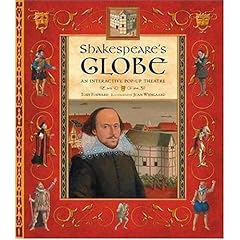Whenever I log into I.N.K., I’m always fascinated by the various activities authors, librarians, and teachers create based on biographies and other non-fiction books. One of my New Year’s Resolutions is to visit more schools in the coming months. Last year I spoke at conferences and museums, which I love, but I didn’t have a chance to visit many classrooms. Looking back at the first non-fiction books Sandra Jordan and I wrote, The Painter’s Eye and The Sculptor’s Eye, I remember how often we visited schools to make sure the language of art we were introducing to young people was clear. We wanted to inspire them to begin a dialogue with contemporary American art. The books were based on my teaching in the Aesthetic Education M.A.T. at Webster University, on discussions with Sandra in museums and galleries, on our research into various approaches developed by art educators across the country, and on our interviews with artists. We often receive letters and e mails from teachers, as well as school librarians, who use our books to stimulate perception in the arts and to enhance basic skills. Over the years, they’ve shared some wonderful lesson plans about the artists and artworks we’ve highlighted. Sandra and I have created teachers guides, as well. So today I want to share some classroom activities based on our book Action Jackson (illustrated by Robert Andrew Parker). In the Responding to Art section, we begin by posing questions, following the line of inquiry we developed in our first two books. It works when talking about an abstract painting, in this case Lavender Mist by Jackson Pollock, or a more traditional, realistic artwork.
Begin by reading Action Jackson. You can read it out loud, have the children take turns reading it aloud, or allow them time to read it to themselves.
Then let everyone take a good look at the reproduction of Jackson Pollock’s painting, Lavender Mist. Children should also have the chance to look at any work of Pollock’s that you have in your library.
RESPONDING TO ART:
What do you say after you say, “I like this painting” or I don’t like it”? For a moment, forget how you feel about the painting and think about what feelings the painting expresses. You can figure this out by answering some questions:
1. Do your eyes travel all around the painting or focus on one spot in the center? Is there a repeated pattern?
What do you see? Is it a house or a tree or a design without a recognizable image?
Sensory words refer to qualities in the painting that appeal to your five senses: sight, touch, smell, sound, or taste. What are some sensory words to describe the elements of color, line, shape, or texture in the painting?
Are the colors bright or dull, soft or garish?
Are the lines straight or curvy, wavy or angular?
Is the paint thick or thin? If you put your hand on the surface would it be flat or bumpy?
What kind of shapes do you see?
If you were to step inside the canvas, would you move slowly or quickly? Would it feel as if you are walking on a soft cloud, on rocks, or through syrup?
What is the mood of the painting as expressed by the colors, lines, shapes, and texture.
What kind of music would you choose to go with the painting? Jazz, rock and roll, or classical?
Pretend you are holding a paintbrush or a stick. Move your arms following the lines of the painting as if you were a conductor leading an orchestra.
TAKE ACTION
Spread a sheet of brown paper on the floor. Moving around the painting with a paintbrush or a stick dipped in black paint, make swooping lines from one edge of the surface of the paper to the other. Let the paint dry. Add a new color. Use different arm motions – long and sweeping, short and quick. Notice that the way you use your arm changes the lines on the paper. Walk around the painting, working from all sides. You can let bare patches of brown paper come through. Make a handprint or two in the corner.
Put on some music and paint in rhythm to the music. Now you will have an idea of what it felt like to be Jackson Pollock working in that quiet barn.
By the way, last week when my daughter Jeanne visited the kindergarten classroom of her daughter Clara (my grandchild, of-course!!), she read Action Jackson. With Miles Davis playing in the background, ten six-year-olds made a group drip painting. Jeanne claims she was a big hit and the teacher didn’t kick her out for making such a mess on the floor. She advises to put lots of newspaper down.













 Much has been written recently about the current plugged-in generation that can’t have fun without electric outlets at hand and electronic devices in hand. Richard Louv’s best-selling book,
Much has been written recently about the current plugged-in generation that can’t have fun without electric outlets at hand and electronic devices in hand. Richard Louv’s best-selling book, 















 Trust Kathryn Lasky to be first up with what may end as one of the year’s best—
Trust Kathryn Lasky to be first up with what may end as one of the year’s best— 









